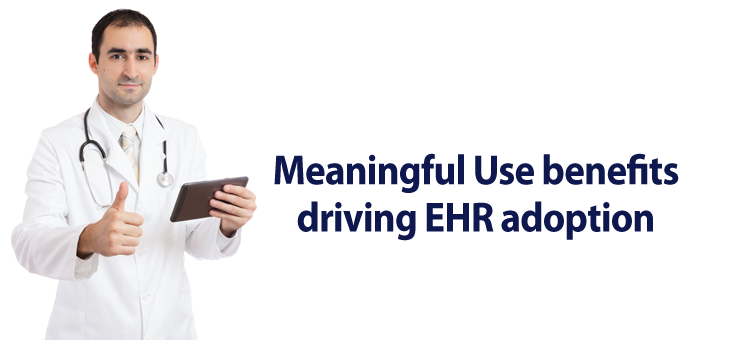In 2009, when the American Recovery and Reinvestment Act (ARRA) was promulgated, the need of the hour was to put the ailing US economy back on the path to recovery. The purpose of The Recovery Act was to immediately create and save jobs, and to provide temporary relief to the sectors most impacted by the recession, including health. Under the stimulus package, which amounted to $787 billion at the time, direct spending was going to take place in all the ailing economic sectors – taking the lead from the Keynesian macroeconomic theory.
The Recovery Act also set up the Office of the National Coordinator for Health Information Technology (ONC), aimed at driving the healthcare industry towards Electronic Health Records (EHRs) and incentive payments through meaningful use of technology. The incentive payments were linked to the Medicare and Medicaid programs for Eligible Professionals (EPs) and Eligible Hospitals (EHs).
The initial measures required to attest for Meaningful Use of EHR technology were adopted by the ONC and CMS in 2009, which mainly focused on data capture and sharing. The criteria “Meaningful Use” was defined by the government as using EHR technology to improve quality, safety, efficiency, reduce health disparities, engage patients and their families, improve care coordination and population and finally, maintain privacy and security of patient health information.
Eligible Professionals and hospitals who met the benchmarks of Meaningful Use were to receive incentive payments under the Medicare (up to $44,000) and Medicaid (up to $63,750) programs – largely aimed at driving more physicians towards adoption of EHR technology.
The measures have so far successfully resulted in nearly 80% adoption of technology by US physicians, with more expected to join the list in 2014. While usage of technology looked cumbersome to the physicians in the beginning, they are now getting increasingly comfortable with it, and are looking to adopt ways to improve patient health, reduce costs and improve efficiencies. One product which is improving the lives of American is CureMD’s “All-in-One” Cloud.
As per recent data, the government has so far rolled out a whopping $17 billion in Meaningful Use incentive payments. The payments have been made to more than 430,000 eligible professionals and hospitals who have adopted technology to achieve Meaningful Use. Of all the eligible hospitals, 93% have registered for the program while 80% of the eligible professionals are also onboard.
The incentive program “has allowed 1,000 flowers to bloom,” said Rob Tagalicod, director of CMS’s eHealth Standards and Services office, signifying flowers as EHR vendors, adding further that, “the question remains: which of these blooms will be hardy enough to meet the challenges of summer.”
While the initial objectives set out for Meaningful Use have largely been met, providers have been presented with a new set of challenges and benchmarks to be able to attest for MU. Stage 2 of the program largely focuses on advanced clinical processes and comprises of newer and stricter benchmarks, which the EPs and EHs will use to report for MU.
The idea behind introducing newer stages of the Meaningful Use program is to ensure that technology is used in a way that it leads to improved outcomes and better coordinated care. Technology certainly has the potential to cut costs, and to be used in a way that it improves shared decision making. This will lead to an era where the demand for physicians is reduced and delivery of coordinated care is made possible at remote locations as well.
However, attesting for advanced stages of Meaningful Use is not easy. Firstly, the EHR vendors have to update their technology in order to help providers attest for Meaningful Use Stage 2. The challenge is to offer providers integrated solutions for the new realities in healthcare — interoperable EHR systems that support not just basic digital documentation, but also population health and payment reform. When that is done, the providers will have to make sure they meet all or majority of the Stage 2 benchmarks set forth by the CMS.
All in all, the biggest reason why the government is improving healthcare standards, is to provide quality healthcare to the patients – something that was missing from the fee-for-service payment model of the healthcare industry. Moving to the pay-for-performance model of healthcare delivery will result in lower costs and improved patient care.
When viewed on a larger scale, participation in Meaningful Use can lead to savings. However, the size of these savings is determined by how fully an eligible provider meets the requirements of the EHR incentive programs, which in turn must be appropriately designed.
With the beginning of Stage 2 Meaningful Use in 2014 and thus the close of Stage 1 Meaningful Use, more data should be available to researchers to demonstrate the ability of Meaningful Use to help reduce healthcare costs.

Join the Discussion!